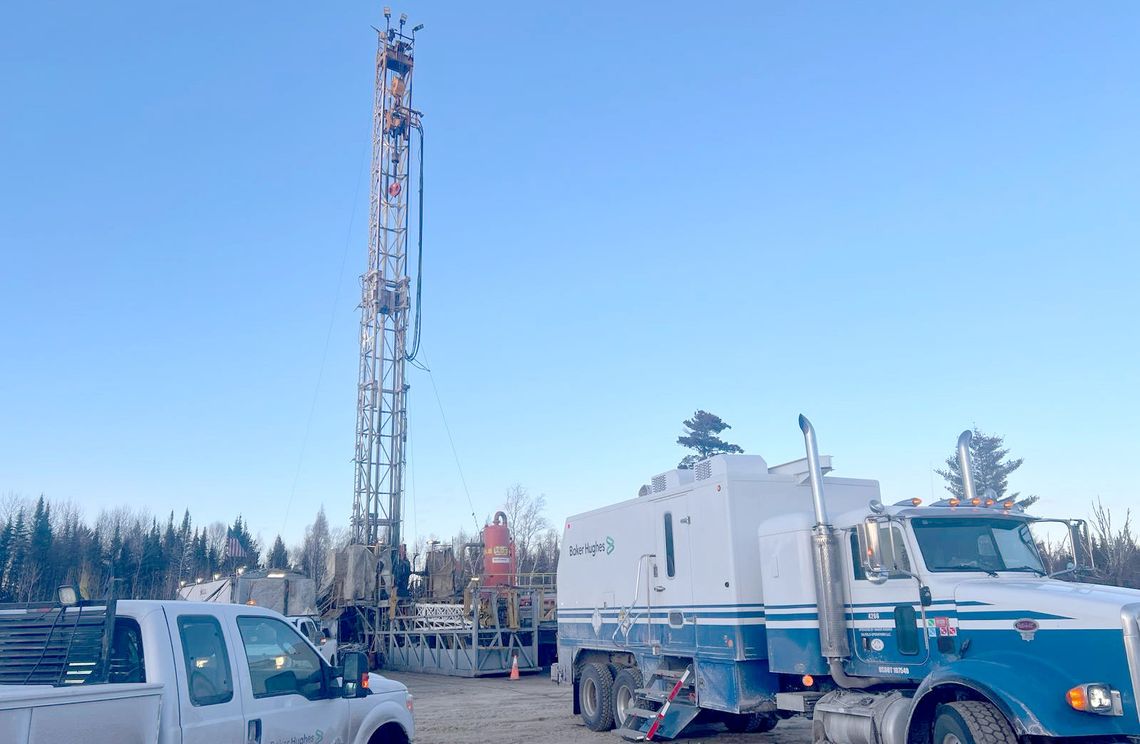Helium has been found near Babbitt. Pulsar Helium said it’s encountered helium 2,200-feet underground in an exploratory drill hole that’s been underway for several weeks.
“This is an outstanding result,” Thomas Abraham-James, Pulsar Helium president and chief executive officer said in a news release. “I am delighted that helium has been identified in the Jetstream # 1 appraisal well. It is a big day for helium exploration, confirming the original discovery in the jurisdiction of Minnesota. I look forward to keeping the market updated with further results as they are received.”
Helium was found at depths of 1,750-feet to 2,200 feet in concentrations of up to 12.4 percent, Pulsar said in the news release.
There’s more work to be done before any commercialization of helium produced from the site, he said.
A comprehensive analysis of the data needs to be completed, Pulsar Helium said in the news release.
Once the analysis is complete, the well will be suspended for flow testing and the specialized drill rig released and demobilized, according to Pulsar Helium.
Rep. Roger Skraba, R-Ely, said he recently spent six hours touring the site.
Skraba is calling on the state to support the project.
“We know it’s there and the state needs to let them get it out of the ground,” Skraba said.
Skraba hopes the finding will lead to development of a commercial helium production facility in northeastern Minnesota.
“I think it’s imperative it stays in the state,” Skraba said of a commercial facility. “And it’s imperative to work with an area trucking company to truck it to Two Harbors or somewhere on the North Shore to a plant where they can separate the gas. I would like to see a facility along Highway 61 somewhere, where they would be able to get on a four-lane highway and get it transported.”
Helium can be used in semi-conductor fabrication, magnetic resonance image (MRI) scanners, fiber optic cables, and in space launches as a pressuring agent in fuel tanks, Abraham-James said.
It can also be used in arc welding, for leak detection in the hulls of ships, in vehicle air conditioning systems, in high pressure equipment and computer hard drives.
“Helium is an incredibly important gas that is needed for a variety of modern products, and I am hopeful that we can source this gas and process it right here in the Northland in the very near future,” Skraba said.
Most of the world’s helium is a byproduct of natural gas production, Abraham- James said.
Helium is inert and is non-toxic, non-flammable and non-hazardous, Abraham- James said.
Helium was first discovered near the site years ago when Duluth Metals was performing copper, nickel, platinum and palladium exploratory drilling, Abraham- James said.
Pulsar Helium’s drill hole is about 50-feet away from the former Duluth Metals drill hole, which was years ago filled with cement.
Skraba said development of a helium project in northeastern Minnesota would help build on the region’s other natural resources.
“Along with this, we could start to mine or recycle copper, nickel, platinum, and palladium, and then have (micro) chip manufacturing in Minnesota,” Skraba said.
The Pulsar Helium exploratory drilling project is regulated by the Minnesota Department of Health.











